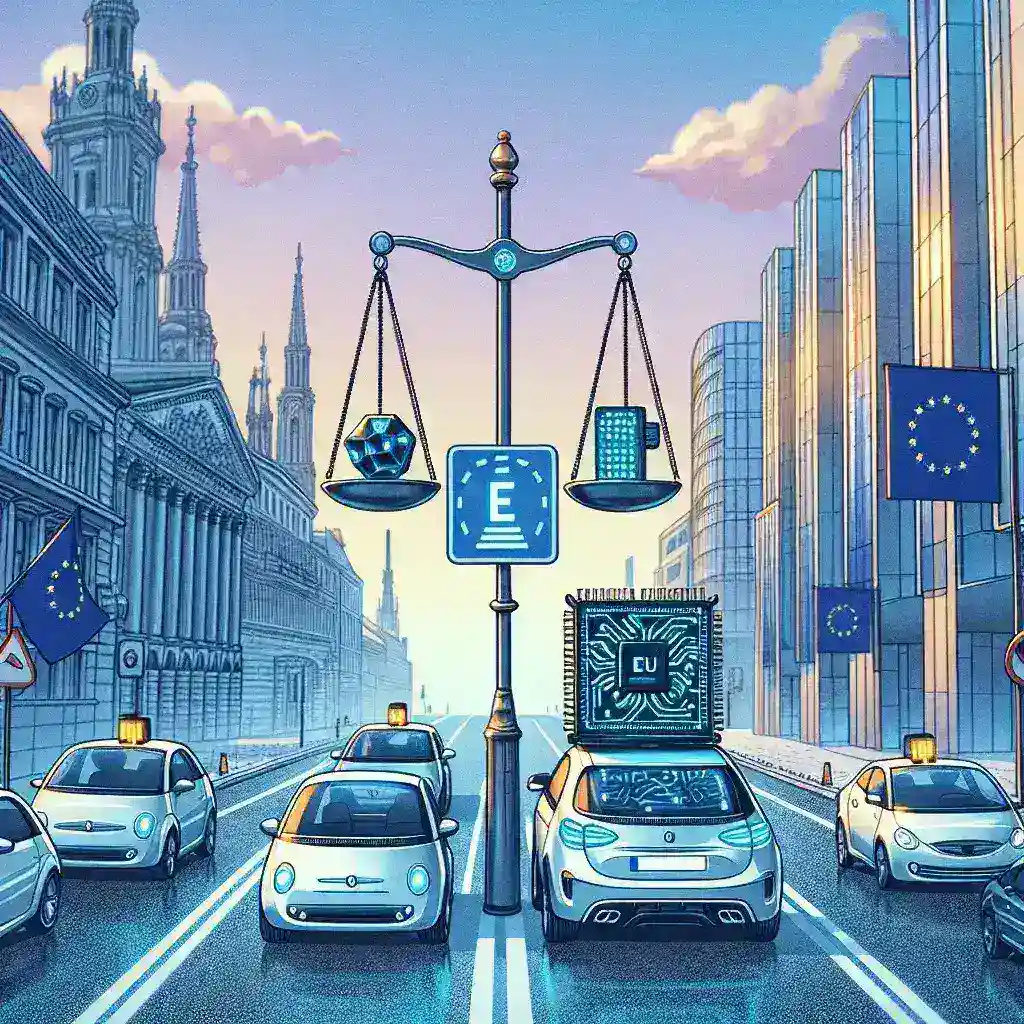As the world rapidly advances towards a future dominated by technology, the realm of autonomous vehicles has become a focal point of regulation and innovation. This article delves into the recent developments surrounding autonomous vehicle regulation, particularly in the context of how Microsoft has managed to sidestep penalties imposed by the European Union (EU).
The Rise of Autonomous Vehicles
The emergence of autonomous vehicles, or self-driving cars, has transformed the automotive industry. These vehicles promise enhanced safety, reduced traffic congestion, and increased mobility for those unable to drive. However, the introduction of such technology also raises significant regulatory challenges.
Historical Context
Since the inception of autonomous vehicle technology, governments worldwide have grappled with how to regulate this rapidly evolving sector. Early experiments with self-driving cars began as far back as the 1980s, but it wasn’t until the last decade that substantial advancements were made. The mainstreaming of technology like artificial intelligence and machine learning has pushed the boundaries of what is possible.
Current Regulatory Landscape in the EU
In the EU, regulations surrounding autonomous vehicles are stringent, as they aim to ensure safety and ethical considerations are at the forefront. The European Commission has laid out a set of rules designed to govern the testing and deployment of autonomous vehicles, focusing on aspects such as:
- Safety Standards
- Data Protection
- Liability Issues
- Ethical Implications
These regulations can be daunting for companies looking to innovate in this space. Any breach of these regulations can result in hefty fines and penalties.
Microsoft’s Strategic Approach
As a tech giant, Microsoft has invested significantly in the development of technologies that support autonomous vehicles. Through its Azure cloud services, research initiatives, and partnerships, Microsoft aims to position itself as a leader in the autonomous vehicle ecosystem. However, recent findings have illustrated how the company has strategically navigated the complex regulatory landscape of the EU.
Sidestepping Penalties: How Did Microsoft Do It?
Microsoft’s approach to avoiding EU penalties can be attributed to several key strategies:
- Proactive Compliance: By actively engaging with regulators and aligning its projects with existing regulations, Microsoft has demonstrated a commitment to compliance. This has helped the company to preemptively address potential regulatory concerns.
- Investment in Research: Microsoft has poured resources into research and development to ensure that its technologies are not only innovative but also adhere to safety standards.
- Collaborative Partnerships: Forming alliances with automotive manufacturers and other tech firms has enabled Microsoft to share knowledge and best practices, which is essential for regulatory compliance.
Real-World Examples
One notable example of Microsoft’s efforts in the autonomous vehicle sector is its partnership with Volkswagen, aimed at developing autonomous driving technology using Microsoft’s Azure platform. This collaboration highlights how Microsoft is not only enhancing its technological capabilities but also ensuring that its offerings meet regulatory standards.
Implications of Microsoft’s Regulatory Navigation
By successfully sidestepping potential penalties, Microsoft sets a precedent for other technology companies in the autonomous vehicle space. This approach can lead to:
- Increased Innovation: Companies may feel more empowered to innovate without the looming fear of penalties, as long as they prioritize compliance.
- Enhanced Public Trust: By adhering to regulations, companies can build trust with consumers who are wary of autonomous technologies.
Future Predictions for Autonomous Vehicle Regulations
The future of autonomous vehicle regulation is expected to evolve alongside advancements in technology. Experts predict the following trends:
- More Comprehensive Regulations: As technology evolves, more detailed regulations may emerge, covering aspects such as machine learning models and data ethics.
- International Standardization: A push for standardized regulations across borders could streamline the approval processes for autonomous vehicles.
Pros and Cons of Current Regulatory Frameworks
Pros
- Enhanced Safety: Regulations aim to minimize risk, ensuring that only safe, well-tested technologies are deployed.
- Consumer Protection: Regulations help protect consumer rights and privacy in an era of increasing data collection.
Cons
- Stifled Innovation: Overly stringent regulations can hinder creativity and delay the deployment of beneficial technologies.
- Compliance Costs: The financial burden of adhering to complex regulations can be a significant hurdle for startups and smaller companies.
Conclusion
The landscape of autonomous vehicle regulation is complex and continually evolving. Microsoft’s adept navigation of EU regulatory frameworks serves as a case study for other companies looking to innovate responsibly. As technology continues to advance, it will be crucial for businesses to maintain an open dialogue with regulators to foster an environment conducive to innovation and safety.
As we move forward, understanding the balance between regulation and innovation will be vital in shaping the future of transportation. Microsoft’s experience underscores the importance of strategic compliance and collaboration in developing technologies that not only meet current standards but also lay the groundwork for future advancements in autonomous vehicles.


Leave a Reply